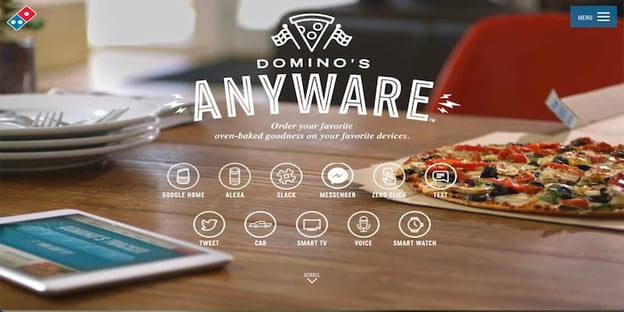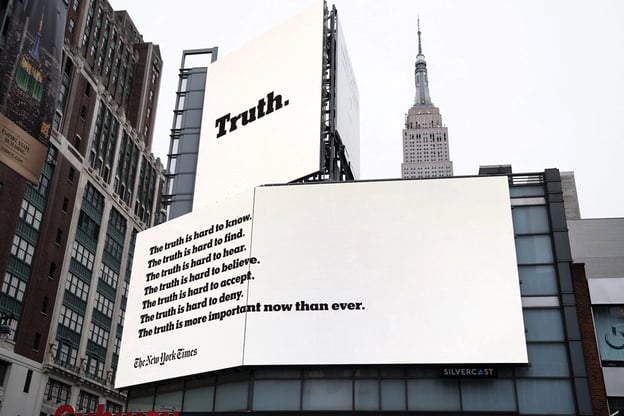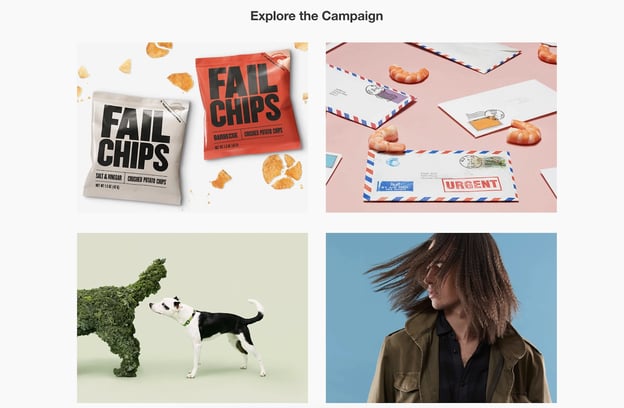When marketing products to customers, consistency is key.
If your product or service is displayed in advertisements or on social media, it needs to convey the same branding, messaging, and tone of voice. But ensuring the consistency of your messaging across all marketing channels is easier said than done.
That’s where integrated marketing comes into play. It’s a strategy used by marketers to make sure all of their messaging ties together.
This piece is going to look at:
- What Is Integrated Marketing?
- What Is Integrated Marketing Communication?
- Why Is Integrated Marketing Important?
- What Are Some Examples of Integrated Marketing?
- How Do You Develop Integrated Marketing Campaigns?
- What’s Your Integrated Marketing Plan?
Let’s get started.
What Is Integrated Marketing?
Integrated marketing is a strategy companies use to advertise and communicate their message and branding through various channels to customers, leads, and potential prospects.
Unlike traditional marketing, integrated marketing is a concentrated effort a company undertakes so that every piece of communication follows a similar message. By following an integrated marketing strategy, companies ensure every branding effort that lands on social media, online content, radio, print, or direct mail has the same focus.
Integrated marketing is not the same as omnichannel marketing. While integrated marketing focuses on aligning communications, omnichannel marketing is more customer-focused and is a strategy for creating a seamless buying journey across multiple channels.
What Is Integrated Marketing Communication?
Integrated marketing communication is the content — the words, images, and posts — that carry the messages in your strategy to your audience.
As the overall strategy behind integrated marketing is presenting a unified message to customers across every channel, integrated marketing communication is a way to describe the tools to help you achieve that goal.
Now that you know what integrated marketing is, let's look at what makes it important.
Why Is Integrated Marketing Important?
Integrated marketing isn’t new. Its core component — consistent messaging — is an essential part of any modern marketing campaign. However, with an ever-increasing number of ways to reach customers, integrated marketing campaigns require frequent analysis and evaluation to ensure brands have an effective presence on the platforms their audience is using.
With so many platforms, it's harder than ever for marketers to catch their audience's attention, and having a clear message is one way to cut through the noise.
Integrated marketing helps you raise brand awareness
People are always interacting with media, whether they are browsing a social platform, watching television, or listening to the radio.
Having a clear, unified message about who your company is allows your audience to connect the dots and gain a better understanding of what your brand is all about.
Integrated marketing helps you drive traffic
Once you have brand awareness, you can focus on driving traffic to your website or social profiles. Create several pathways and cross-promote to drive people from one destination to the other. For example, you can use a Facebook ad to drive website traffic or advertise QR codes in direct mail flyers to drive visits to your social platforms.
Integrated marketing helps you understand your audience
We know that different audiences use different media platforms.
The audience interacting with your product on social media may be different than the audience you’re targeting through direct mail. Integrated marketing helps you understand more about each of these audience segments so you can refine your strategies and make your communications even more effective.
What Are Some Examples of Integrated Marketing?
Integrated marketing is everywhere.
It's often so well executed by the companies using it that customers don't even know they've been part of a targeted campaign until they're purchasing a product.
Here are five amazing examples of integrated marketing campaigns that have worked:
1. Domino’s “AnyWare” integrated marketing campaign

Source: Domino’s
Ever heard the old saying, “Don't go shopping when you're hungry”? The Domino's AnyWare campaign played the long game by planting the idea that no matter where they were, they could order up their favorite pizzas to satisfy their cravings.
A key part of the strategy was making sure customers could order pizza on their terms: They could use anything from Twitter to smartwatches to TVs to place an order. Domino’s then saved the customer's preferences on an internal database so the next time they were hungry, customers could simply re-order from the same device or platform.
Pizza orders made through digital channels skyrocketed, and the campaign was seen more than 2 million times across social media.
2. Intuit “A Giant Story” integrated marketing campaign
Source: Digiday
When Intuit launched its first integrated marketing campaign, it decided to go big.
The company blasted advertisements showcasing the company's brand and vision across various channels, including YouTube, Facebook, Twitter, and Snapchat. They even purchased a coveted Super Bowl ad slot to get as many eyes as possible on its content — a “Pixar-like” short film introducing the company’s products to its target audience.
It worked. During the first week of the launch, the short film was viewed nearly 17 million times, and within three months, 22 million people had seen it. However, the results stretched beyond video views — brand awareness increased by 17%, ad recall went up 26%, and overall favorability reached 27%.
3. “Did You Mean MailChimp” campaign
Source: CoSchedule
Our next example is MailChimp’s integrated marketing campaign in which the company rolled out fake products.
After their company name was mispronounced in a podcast, MailChimp ran with it, creating nine faux products that sounded similar to MailChimp. These products were then promoted directly to MailChimp’s target audience to entice one reaction: curiosity.
Some of the fake products included: NailChamp, SnailPrimp, MailShrimp, and FailChups.
The strategy not only showed that the brand had a sense of humor (what’s funnier than poking fun at yourself?), but it also led to a lot of people being corrected on Google with: “Did you mean MailChimp?”
A brand-awareness win!
4. “The Truth is Hard” campaign from The New York Times

Source: AMA
In 2018, The New York Times was facing a crisis: Their subscriptions were dropping, and their target audience was becoming disillusioned with the media. So the newspaper launched an integrated marketing campaign to highlight the importance of the media's role in reporting news and providing transparency to the public.
The campaign — “The Truth Is Hard” — emphasized to readers the importance of quality journalism in a free society. The campaign also illustrated the challenges journalists face when trying to report stories accurately, so the target audience could see how much effort was involved in reporting.
With the launch of the campaign, the newspaper had its best quarter ever for subscription growth, and in the following quarter, became the first publication to surpass 2 million digital subscribers.
5. BBC America’s “Doctor Who” QR code campaign
Source: BBC America
Our final example from BBC America mixed online and offline channels to drive traffic to its science fiction series.
BBC America joined up with AMC Networks and BBC Studios to create a QR code that viewers could scan with their smartphones to see virtual images from the show “Doctor Who” in their real surroundings.
This strategy gave viewers a unique experience away from their television screens, and they didn’t need to download a separate app to enjoy it — they just had to scan the QR code.
It was a great way to connect with a tech-savvy target audience that then shared their experiences on social media.
How Do You Develop Integrated Marketing Campaigns?
It's not difficult, but successful integrated marketing campaigns do require careful planning.
Unsure where to begin? We’ve got some tips for you:
1. Define an objective
Before you launch an integrated marketing campaign, you need to decide what you want to achieve.
You may want to increase brand awareness (like Intuit), generate curiosity (like MailChimp), or create a campaign that encourages social sharing (like BBC America).
Whatever your objective, make sure it is something you can tie results to once your campaign launches. For example, if you want to boost brand awareness, increasing ad recall and knowledge around your company will be your aim.
2. Develop buyer personas
The next step in your campaign is defining what audience segment you want to target.
As we said earlier, different audiences gravitate towards different media channels. Younger audiences may use social media, while older audiences find their products with the help of traditional media like television and radio.
A buyer persona is a representation of a target customer — their demographics, their interests, the media they consume, and other factors. You can create personas based on data you already have, although persona creation is sometimes a trial-and-error process. As you develop marketing campaigns based on personas, the results of your efforts can tell you whether your personas need to be refined.
3. Map your strategy
Now that you know your goals and who you are targeting, it's time to plan your strategy.
Get a piece of paper (or a whiteboard or spreadsheet) and start brainstorming answers to these questions:
- What channels will you use to target your buyer personas?
- What communications will they receive (i.e. newsletters, sales pitches, product information)?
- What will happen once they land on your website? How will you collect their contact information and turn them into a lead?
- What happens after they enter your funnel?
These questions are broad, but they will help you outline the rough path you want a customer to take, from seeing your advertising material to landing in your marketing funnel. From there, you can begin to create your content strategy and plan out exactly what you want your marketing material to say.
Which brings us to our next point ...
4. Create your content
One of the most important parts of any marketing strategy is the content.
This is where integrated marketing differs from other strategies like omnichannel and traditional marketing. Here is where you will make sure each piece of communication ties back to a unified message. Whether a potential customer is viewing your content via social media or seeing a television advertisement, it should be clear that the two pieces of content are from the same brand.
You can see this consistent messaging through The New York Times “Truth” campaign. Here is the newspaper’s online messaging:
Source: Newsworks
And the same messaging was also mirrored in its traditional print newspapers:

Source: Behance
Although the content is slightly different to suit the medium, the impact is the same: Truth matters.
5. Collaborate internally
The secret to any successful integrated marketing campaign is getting every marketer on board with the messaging.
If you are launching a campaign across various channels, many different team members will be involved. You will need to make sure sales and marketing work together and, in some fields, content may also need to be reviewed for compliance.
The only way to do all this is with successful collaboration. Make sure you get approvals from the stakeholders on the campaign so that each piece of content released on a channel is tied back to the campaign's objective. This is easier with the right toolkit.
You can use tools like Buffer and Loomly to collaborate on and approve social media posts before they are posted to your channels. For assets like images, videos, and audio, Ziflow can streamline the process, especially when multiple pieces of content are being produced at once.
All you have to do is send the piece of content to the relevant stakeholders and wait for them to approve or deny it before moving forward.
Ziflow’s review and approve tool can streamline collaboration for integrated marketing campaigns
6. Measure your results
Finally: Track everything.
Google statistics show that companies that use multiple analytical tools are nearly 40% more likely to improve their marketing efforts. You can increase the success of your integrated marketing efforts by tracking metrics like:
- Content impressions
- Online conversions
- Referral traffic
- Social media insights
- Response rates
By measuring how responsive your audience is to your campaign, you can track the success of your content on each channel and tweak it. Suppose your target audience is responding better to content on your social media feeds than on Snapchat channels. In that case, you can tweak your campaign and put more of your content and resources onto the channels that are performing better.
What’s Your Integrated Marketing Plan?
Integrated marketing is one of the best strategies companies can use to send a clear, united message to their target audiences.
Whether you are posting content on social media or showing video advertisements on television, integrated marketing allows your team to deliver focused messaging to help customers understand your products and boost brand awareness.
The secret to successful integrated marketing is all in the planning. Not only do you have to set out clear objectives, but you also need to map out how you will design your strategy and what channels you will use. With tools like Ziflow, creative teams can collaborate and improve the efficiency of their integrated marketing campaigns.
Want to find out more about how Ziflow can help with your next integrated marketing campaign? Read more here.





